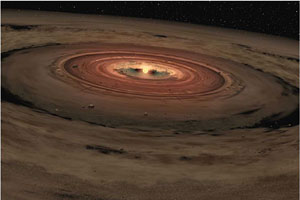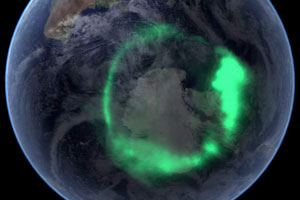 Several billion years ago, our solar system was nothing more than a nondescript cloud of gas. There was no sun, no planets-- just a lot of hydrogen, a bit of helium, and trace amounts of the carbon, oxygen and the other elements that we take for granted here on Earth. How is it that the Earth came look so different from that original cloud?
Several billion years ago, our solar system was nothing more than a nondescript cloud of gas. There was no sun, no planets-- just a lot of hydrogen, a bit of helium, and trace amounts of the carbon, oxygen and the other elements that we take for granted here on Earth. How is it that the Earth came look so different from that original cloud?
You may remember from the brief description of the planets in my last post that the composition of the inner planets is actually quite different from that of the outer planets. The inner planets are dense and rocky while the outer planets are composed almost entirely of hydrogen and helium.
 It is not a coincidence that the composition of the outer planets so closely resembles the original solar system. As that primordial cloud of hydrogen and helium began to collapse, specific climate patterns began to settle across the solar system. Those climate patterns are almost entirely responsible for the ways in which each planet formed.
It is not a coincidence that the composition of the outer planets so closely resembles the original solar system. As that primordial cloud of hydrogen and helium began to collapse, specific climate patterns began to settle across the solar system. Those climate patterns are almost entirely responsible for the ways in which each planet formed.
It should come as no surprise that the regions of the solar system closest to the sun became the hottest and the regions furthest from the sun the coldest. Like climate on Earth, winds permeate the solar system, and material is thrown off the surface of the Sun and into space. This material is ejected at a rate equal in mass to the Transamerica Pyramid building every second! This stream of particles is called the solar wind. Although you cannot see the solar wind, you may have noticed it indirectly-- the solar wind is responsible for such lovely phenomena as aurora and comet tails.
The temperature differences also helped create the solar system we see now. High temperatures closer to the sun boiled the hydrogen and helium off the forming inner planets, like steam rising from a pot of water. At present, what little hydrogen is left on the inner planets is locked up in compounds like water and methane. After the boiling, storms of solar wind swept away the stray particles, pushing them into the outer reaches of the solar system.
